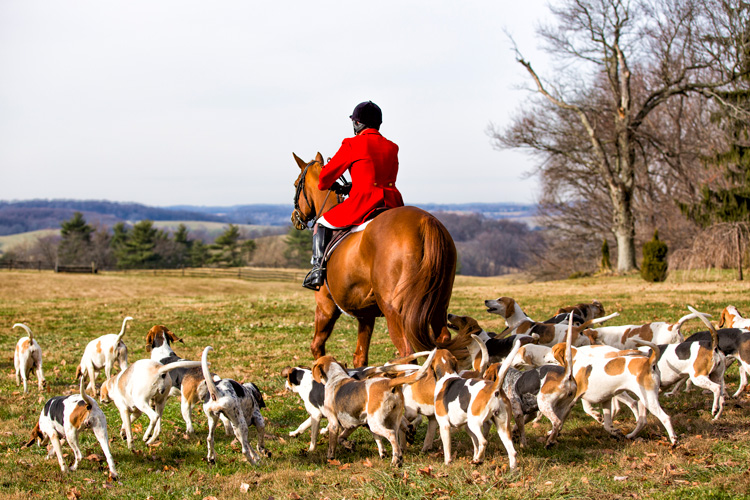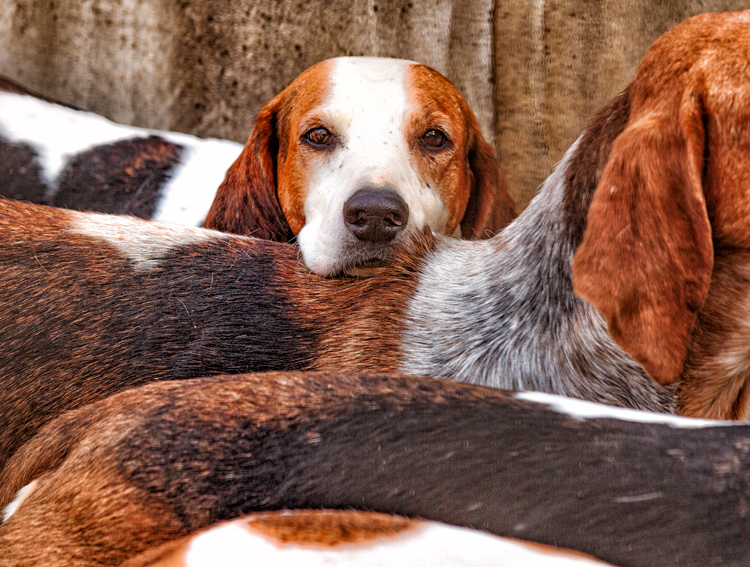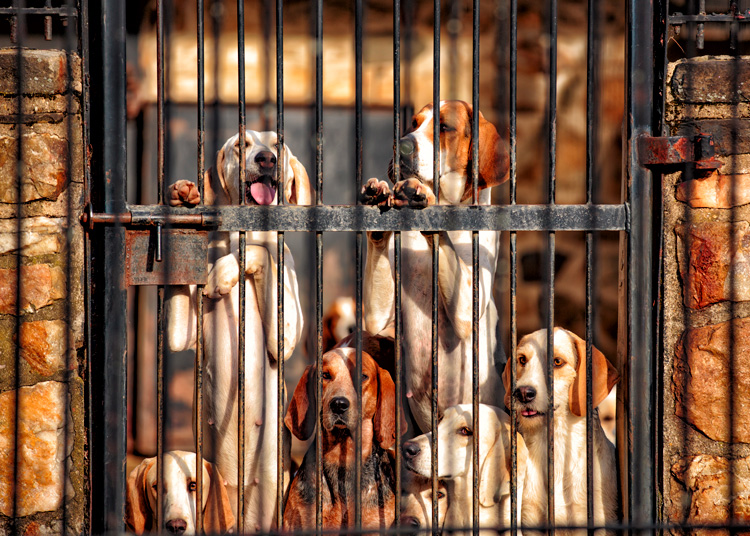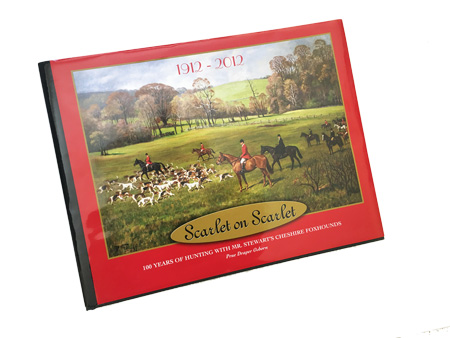PHOTOS BY Maria Errico
The pristine Pennsylvania valley has changed little over 100 years.W.Plunket Stewart set his heart on having the best pack of foxhounds, his own country to hunt over, and his own hunt. It was his motivating force in 1910 and ’11 when he lived in Philadelphia, Pennsylvania, with his wife and children.

Having enjoyed many days foxhunting with the Radnor Hounds, as well as with Charles Mather’s Brandywine Hounds and many other packs, he spent hours scouting country in his touring car while driving the back roads of southeastern Pennsylvania. Legend has it that he pulled over to a small parking spot at the top of a hill one day and looked across the expanse of valley before him and knew he had found his ideal hunting country. Mather granted him permission to claim the area that formerly had been considered Brandywine country. The valley Stewart saw that day remains virtually unchanged today, and that parking spot is now the Kennel Lawn, where horses and hounds often meet, most notably with hundreds of admirers every Thanksgiving.

The hunt’s first pack of American hounds was bought from a farmer nearby, but Stewart soon began importing hounds from England. The pack was named the Cheshire after the English pack from the County of Cheshire. Eventually it was named Mr. Stewart’s Cheshire Foxhounds to distinguish it from the English hunt. Before long he had an enviable pack of English foxhounds and was building a fine reputation for his hunt.
Tireless in his pursuit to grow and open wide his hunting domain, Stewart bought up farm after farm. He removed wire and replaced it with post-and-rail and turned planted fields back to turf to provide the perfect jumping and galloping country. He regularly invited friends from far and wide to enjoy a week of hunting with Cheshire. Eventually many of these guests became landowners, buying farms from the master and establishing hunt boxes in Cheshire country.

By the early 1930s, Stewart married the recently widowed Carol Harriman Penn Smith. Avid foxhunters, Carol and her young daughters, Nancy and Avie Penn Smith, moved from Long Island to his home.
Stewart’s greatest success in providing hunting land was enticing Robert Kleberg of King Ranch fame to buy Lammot du Pont’s 5,200-acre farm with the lure of prime cattle grazing land. When the King Ranch came to town with its Santa Gertrudis cattle, the Cheshire Hunt became more of a foxhunter’s dream than ever imagined. Eventually the King Ranch doubled its original land holdings there, and over 15-square miles was open to hunting.
Both the young Penn Smith girls loved to hunt, but it was Nancy who became her stepfather’s protégé. She knew the hounds and the breeding program. In 1945, not long after marrying John B. Hannum, she became Stewart’s co-master. She also organized the first Cheshire point-to-point at Chesterland that spring. When her mother died suddenly in November 1949, followed less than two months later by her stepfather, it was Nancy Penn Smith Hannum who became lady master of Stewart’s Cheshire Foxhounds.
Nancy’s reputation and that of her pack of English hounds grew and grew. Breeding the finest hounds and producing great sport were her life. She spent every moment of every day trying to perfect it, while preserving the hunt country her stepfather had cobbled together. She became known for her ability to persuade the most undeterred landowner to protect, rather than develop, his land. When the King Ranch wanted to sell, it was the Brandywine Conservancy and the generous members of the Cheshire Hunt that found a way to protect it from massive development. The hunt has been fortunate in retaining almost all its original country.

Nancy Hannum stepped down as master in 2003. She held the role for 58 years, one of the longest terms in the history of American foxhunting. It took three new masters to fill her boots: Nina Stewart, Bruce Miller, and Russell Jones.
It was the beginning of a new era. Huntsman Ivan Dowling eventually transformed the pack to what became known as the Cheshire Hound, crossing the finest qualities of the English hound with those of the Penn-Marydel and hunting an all-bitch pack.
Nancy died on the last day of the 2009–2010 hunting season at the age of 90. Today, co-masters Anne Moran and Sanna Neilson continue her legacy of land preservation, encouraging subscribers to put their land under conservation easement. It has been their goal to show the utmost respect to non-subscriber Cheshire-country landowners, for without their willingness to share their land, there would be no hunting.

Prue Draper Osborn’s Scarlet on Scarlet:
100 Years of Hunting with Mr. Stewart’s Cheshire Foxhounds, published in 2012. It is the history of the legendary hunt told through diary entries, news clippings, photos, and personal anecdotes from members of the field.
